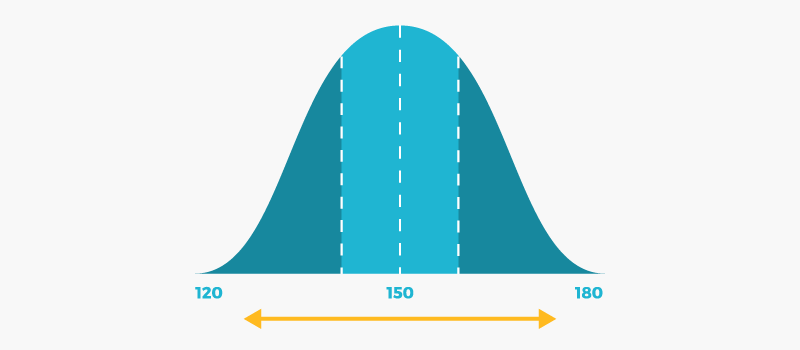LSAT Scoring
Understanding LSAT Scoring from 120 to 180
Understanding LSAT Scoring from 120 to 180

Your LSAT scores are primarily based on your “raw score”, which is the number of questions you answered correctly out of the 100-102 total scored questions. The average number of correct answers for all test-takers is about 58. Because the Law School Admission Council (LSAC) computes your raw score based solely on the number of correct answers, there is no penalty for guessing and you should never leave any questions unanswered.
You receive 3 scores when you take the LSAT:
Your Scaled Score ranges from 120-180, with 150 being the rough average. The LSAC takes your raw score of correct answers and converts it to your Scaled Score through a statistical process called “equating”, which adjusts for minor differences between tests over time. The LSAT is NOT scored on a curve, which means that your performance is NOT compared only to students who took the test on the same day as you. Rather, your score is measured across all LSATs administered over time. The average LSAT Scaled Score is about 150, and more than 50% of all scores are between 145 and 159.
Your Percentile Rank reflects the percentage of test-takers scoring below your 120-180 score. So if your 165 Scaled Score gives you a 90th Percentile Rank, this means you scored better than 90% of all LSAT test-takers and that 10% scored better than you. The LSAC calculates your Percentile Rank based on a distribution of all scores over the prior 3-year period.
Your Score Band is a range of Scaled Scores above and below Your Scaled Score that reflects the level of confidence at which Your Scaled Score represents your “true score”. With the LSAT, your Score Band is roughly 3 points above and 3 points below Your Scaled Score with a 68% level of confidence. Thus, the LSAC can report that it is 68% confident that the true score of a person with a 165 Scaled Score is between 162 and 168.
The American Bar Association (ABA) accredits U.S. law schools, collects data on their admissions and, in June 2006, voted to change the way law schools report LSAT data on their entering 1L students. Previously, if a law school applicant took the LSAT multiple times, then law schools had to report the average of those LSAT scores to the ABA. After the 2006 vote, however, law schools must report the highest LSAT score to the ABA. How does this affect you? Well, the LSAC continues to report all LSAT scores for a student to law schools, and it is up to each law school to decide whether it will average your scores or only use the highest score in evaluating your application. Applicants should check with each law school they apply to in order to determine what evaluation method will be used.
